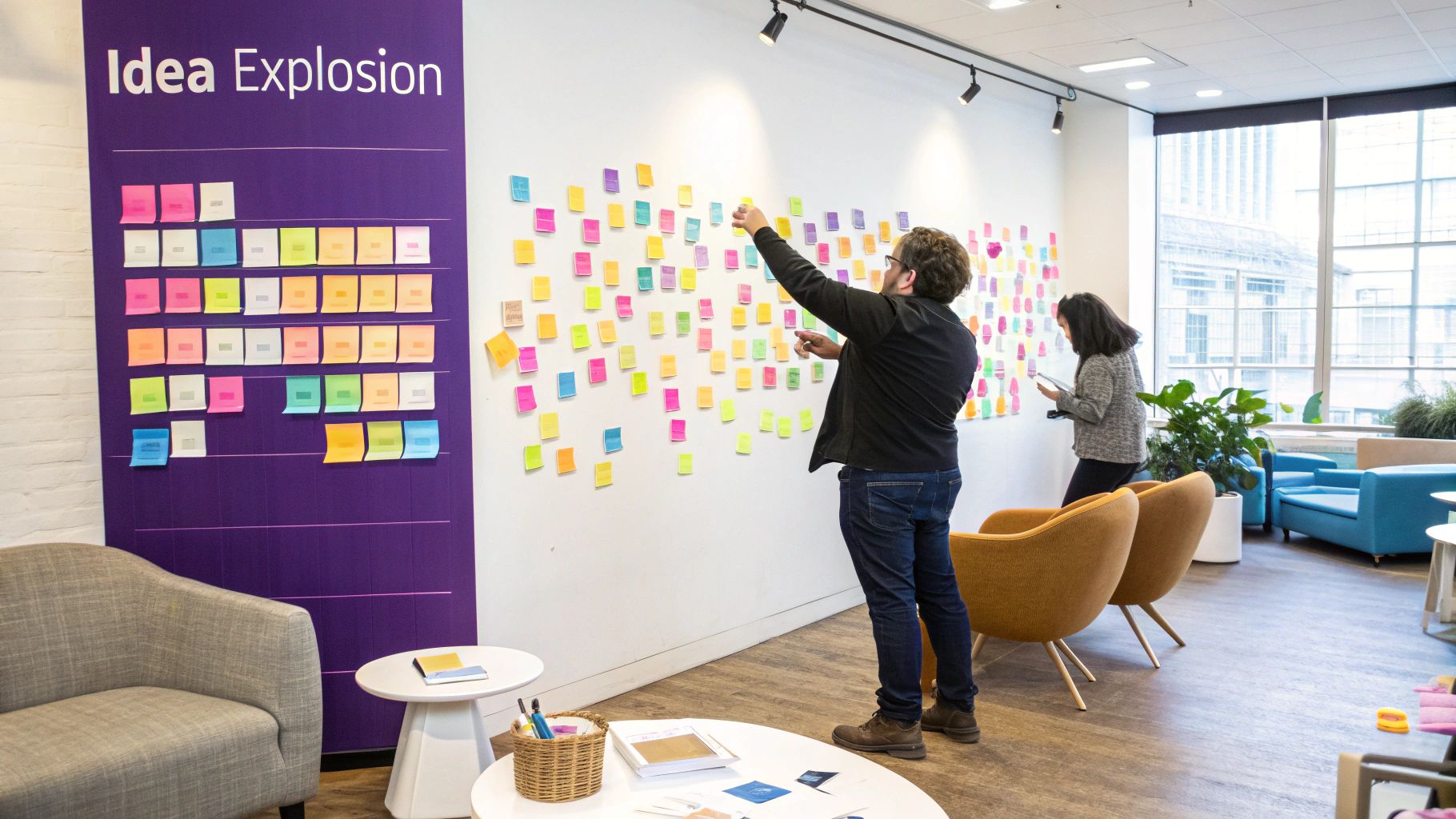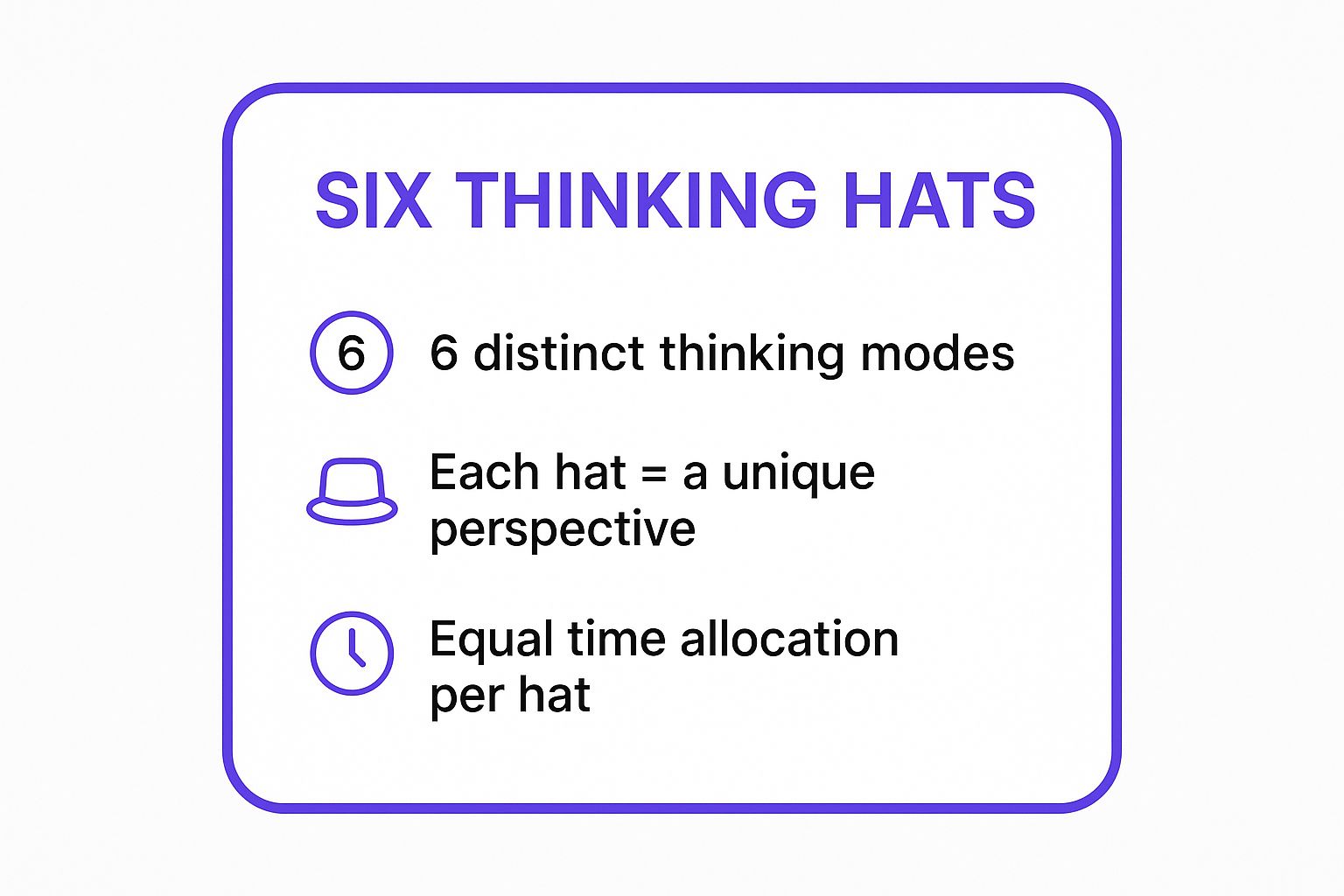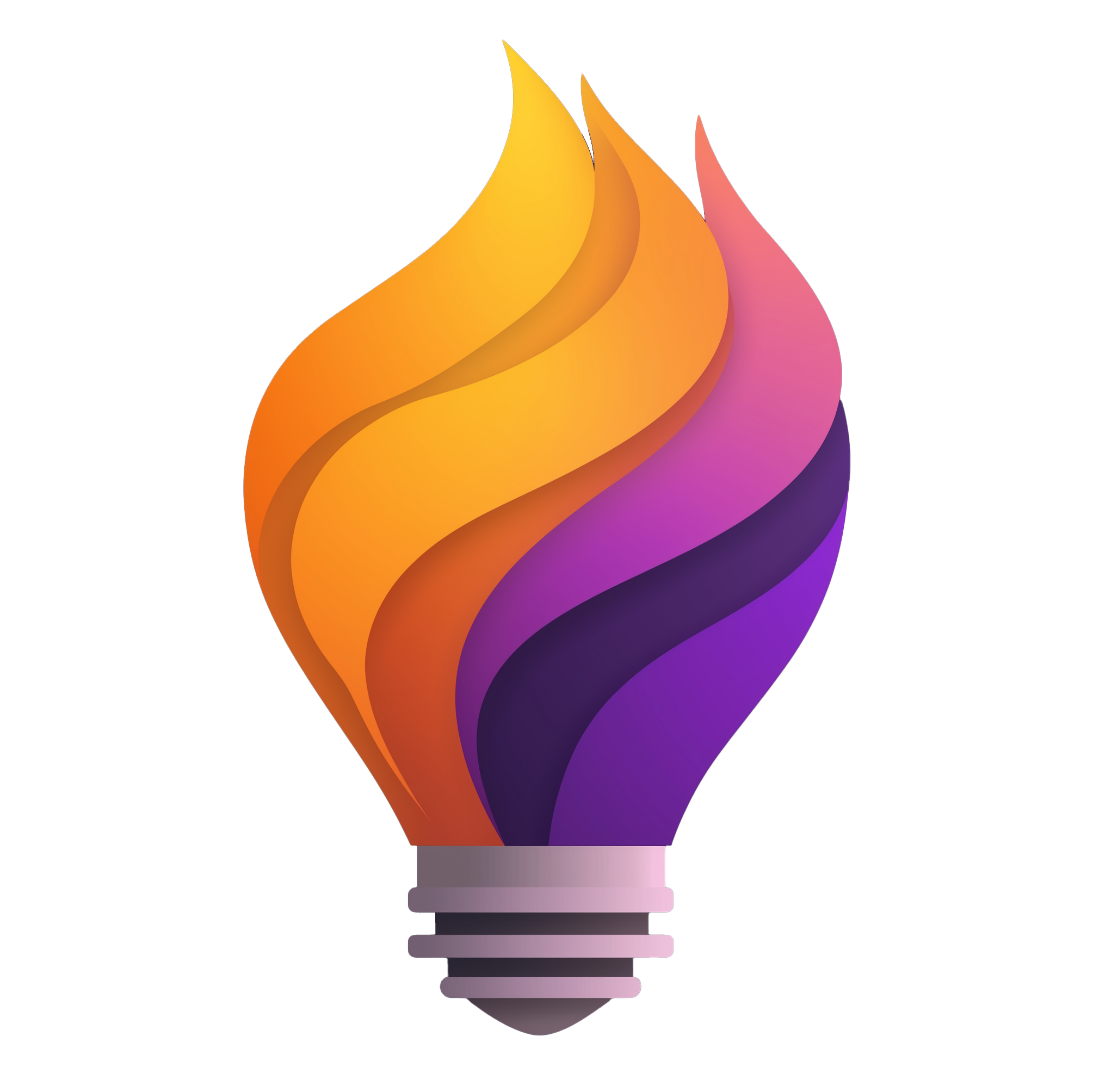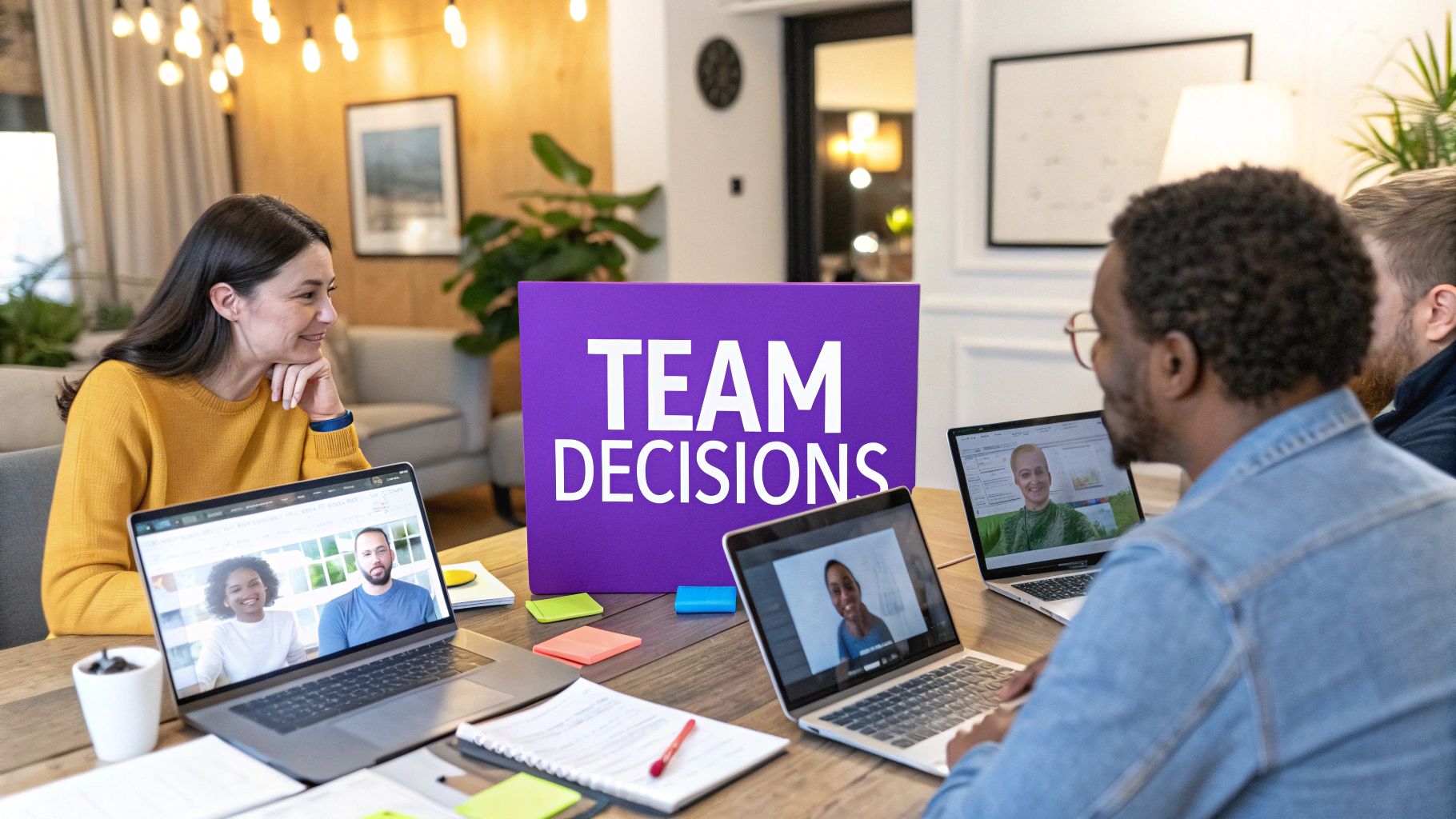Stuck in a Loop? How to Make Better Group Decisions, Faster
In today's fast-paced, often remote work environment, making effective group decisions is more critical and challenging than ever. Teams frequently get stuck in endless debates, fall prey to the loudest voice in the virtual room, or reach a 'consensus' that no one is truly committed to. The result is stalled projects, missed opportunities, and frustrated team members. The problem isn't a lack of effort; it's the absence of a structured process. Without the right framework, even the most intelligent teams can struggle to combine their collective knowledge into a coherent, actionable choice.
This article breaks down the best group decision making techniques that provide the structure needed to navigate complexity, mitigate common biases like groupthink, and ensure every voice is heard. We will move beyond generic advice to give you practical, step-by-step guidance on eight powerful methods, including the Nominal Group Technique, the Delphi Method, and Six Thinking Hats.
You'll learn not just what these techniques are, but exactly how to implement them, their specific pros and cons, and which scenarios they are best suited for, with a special focus on adapting them for remote and hybrid teams. By mastering these approaches, you can transform your team's decision-making process from a source of friction into a strategic advantage. This guide will help you produce more innovative solutions, secure stronger team buy-in, and ultimately, make better decisions, faster.
1. Nominal Group Technique (NGT)
The Nominal Group Technique (NGT) is a structured brainstorming method designed to ensure every group member has an equal voice in the decision-making process. Developed by Andre Delbecq and Andrew Van de Ven in the 1970s, it cleverly mixes individual, silent work with group collaboration. This approach prevents more outspoken members from dominating the conversation and encourages quieter individuals to share their valuable insights, making it one of the most equitable group decision making techniques available.

The process is straightforward yet powerful. First, a facilitator presents a clearly defined question or problem. Participants then spend time (usually 10-15 minutes) silently writing down as many ideas as possible. Next, each person shares one idea at a time in a round-robin format, which the facilitator records on a shared board for all to see. This continues until all ideas are listed, followed by a group discussion to clarify and evaluate each point. Finally, the group votes on the ideas, often through a private ranking system, to determine the final decision or priority.
When to Use NGT
NGT is exceptionally effective when dealing with controversial or emotionally charged topics, as the silent, anonymous nature of idea generation and voting reduces conflict. It's also ideal when you need to ensure all stakeholders, from junior team members to senior executives, contribute equally. Software development teams, for instance, use NGT for prioritizing new features, ensuring that technical feasibility is weighed just as heavily as market demand.
Tips for Effective Implementation
To get the most out of NGT, especially with remote or hybrid teams, follow these practical tips:
- Keep Groups Small: Aim for a group size of 5 to 9 people. This is large enough for diverse ideas but small enough to manage efficiently.
- Use a Neutral Facilitator: The facilitator’s role is crucial. They should guide the process without influencing the outcome, ensuring the rules are followed and discussions stay on track.
- Leverage Digital Tools: For remote teams, use digital whiteboards like Miro or Mural for idea sharing and polling tools for anonymous voting. This keeps the process organized and inclusive.
- Be Crystal Clear on the Problem: A vague problem statement leads to unfocused ideas. Spend time crafting a precise question before the session begins. For example, instead of "How can we improve our app?" use "What specific feature would most improve user retention in the next quarter?"
2. Delphi Method
The Delphi Method is a systematic, iterative forecasting and decision-making technique that harnesses the collective intelligence of a panel of geographically dispersed experts. Developed by the RAND Corporation in the 1950s, its core strength lies in using anonymous, multi-round questionnaires to achieve a reliable consensus without the biases of direct group interaction. This asynchronous process is one of the most powerful group decision making techniques for complex, long-range predictions where concrete data is scarce.

The method works through a structured, multi-step process managed by a facilitator. Initially, a panel of experts is asked a broad question in the first questionnaire. The facilitator collects these anonymous responses, identifies key themes, and creates a more structured second questionnaire based on this feedback. In subsequent rounds, experts receive a summary of the group's responses from the previous round and are asked to review their earlier answers. This cycle of anonymous feedback and re-evaluation continues for several rounds until the group’s opinions converge or a clear point of stability is reached.
When to Use the Delphi Method
The Delphi Method is ideal for situations requiring expert judgment on future trends, policy development, or complex problem-solving where face-to-face meetings are impractical or undesirable. Its anonymity makes it perfect for sensitive topics, as it encourages honest feedback without fear of professional repercussions. For example, it is widely used in healthcare to establish clinical practice guidelines, in technology to forecast market trends, and in public policy for long-term environmental planning.
Tips for Effective Implementation
To ensure a successful Delphi study, especially with a distributed panel of experts, consider these practical tips:
- Carefully Select Your Experts: The quality of the outcome depends entirely on the panel. Aim for a diverse group of 10 to 50 experts with proven, relevant expertise.
- Design Unambiguous Questions: Your questions must be crystal clear to avoid misinterpretation. A pilot test with a small group can help refine the questionnaire before sending it to the full panel.
- Provide Clear Statistical Summaries: Between rounds, present the collated results using medians, ranges, and key arguments. This allows experts to see where their opinion stands relative to the group without revealing individual identities.
- Maintain Strict Anonymity: Anonymity is the cornerstone of this method. Assure participants that their individual responses will remain confidential throughout the entire process to foster candid feedback.
- Plan for Multiple Rounds: A typical Delphi study involves two to four rounds. Set clear timelines for each round and communicate them to participants upfront to manage expectations and maintain momentum.
3. Brainstorming
Brainstorming is a classic and dynamic creative technique designed to generate a high volume of ideas for a specific problem or topic. Popularized by advertising executive Alex Osborn in the 1940s, its core principle is to separate idea generation from idea evaluation. This approach encourages participants to think freely, share spontaneous thoughts, and build upon each other's contributions in a judgment-free environment, making it one of the most foundational group decision making techniques for fostering innovation.

The process is typically unstructured and high-energy. A facilitator presents a problem or a prompt, and the group then calls out any ideas that come to mind. One person's idea can spark another's, leading to a chain reaction of creative thinking. All suggestions are recorded on a shared space, like a whiteboard or digital document, without any immediate criticism or debate. The emphasis is entirely on quantity over quality in this initial phase. Only after the brainstorming session is complete does the group move on to organize, discuss, and evaluate the generated ideas to identify viable solutions.
When to Use Brainstorming
Brainstorming is most effective at the very beginning of a project when the goal is to explore a wide range of possibilities rather than select a single, perfect solution. It's perfect for situations where you need to break free from conventional thinking and generate novel approaches. Companies like IDEO and Google famously use brainstorming in their design thinking and innovation labs to explore new product concepts. Similarly, advertising agencies rely on it to develop creative campaign ideas, and startups use it to pivot or solve complex user problems.
Tips for Effective Implementation
To ensure your brainstorming session is productive and not just chaotic, especially with remote or hybrid teams, consider these tips:
- Set Clear Ground Rules: The most important rule is no criticism. Deferring judgment creates a safe space for all ideas, no matter how unconventional. Other rules include encouraging wild ideas, aiming for quantity, and building on the ideas of others.
- Use a Skilled Facilitator: A good facilitator keeps the energy high, ensures everyone participates, gently steers the conversation back on track if it derails, and enforces the ground rules.
- Leverage Visual and Digital Tools: For distributed teams, digital whiteboards like Miro or FigJam are invaluable. They allow everyone to post ideas simultaneously using virtual sticky notes, which keeps the process organized and engaging.
- Separate Generation from Evaluation: Schedule a different meeting to evaluate the ideas. Mixing generation with evaluation stifles creativity. Let the ideas sit for a day or two before the group reconvenes to critique and prioritize them with a fresh perspective.
4. Consensus Decision Making
Consensus Decision Making is a collaborative process where the goal is for all members of a group to agree on a final decision. Unlike majority rule, which can leave a significant minority feeling unheard and uncommitted, this method seeks a resolution that everyone can actively support. It involves in-depth discussion, negotiation, and modifying proposals until the entire group finds a path forward they can collectively endorse. This commitment-focused approach is one of the most powerful group decision making techniques for building group solidarity and ensuring long-term buy-in.
The process begins with a proposal, which is then discussed and refined by the group. Members can express concerns, suggest amendments, or even block the proposal if they have a fundamental objection. The facilitator's role is to guide the conversation, ensuring all viewpoints are heard and helping the group find common ground. This cycle of discussion and refinement continues until a version of the proposal emerges that has no remaining objections. This shared agreement is the core strength of consensus, as it helps teams avoid the pitfalls of groupthink and fosters a deeper sense of collective ownership over the outcome.
When to Use Consensus Decision Making
This technique is most valuable for high-stakes decisions that require a strong, unified commitment from every member. It is ideal for establishing core values, setting long-term strategic direction, or making policy changes that will affect the entire organization. For example, cooperative businesses and open-source software communities often rely on consensus to ensure that major developments reflect the will of the whole community, not just a powerful faction. It is less suitable for routine or urgent decisions where speed is critical.
Tips for Effective Implementation
To successfully implement consensus, especially in a remote or hybrid environment, consider these essential tips:
- Establish Clear Ground Rules: Before starting, agree on what consensus means for your group. Does it mean unanimous agreement, or "consent" (no one objects)? Define the process for raising concerns and blocking proposals.
- Use a Skilled Facilitator: An impartial facilitator is critical to keep discussions constructive, manage conflicts, and ensure the process doesn't stall. They help focus the conversation on shared interests rather than fixed positions.
- Allow Ample Time: Consensus is not a fast process. Rushing it will lead to frustration and superficial agreements. Schedule dedicated, sufficient time for deliberation, especially when working across different time zones.
- Leverage Collaborative Documents: For remote teams, use shared documents (like Google Docs) where proposals can be written and amended in real-time. This creates a single source of truth and allows asynchronous contributions.
5. Multi-Voting (Dot Voting)
Multi-voting, often called dot voting, is a simple yet powerful method for prioritizing a long list of options down to a manageable few. It's a quick, visual, and democratic process where each participant gets a limited number of "dots" or votes to distribute among various ideas. This technique is especially useful after a brainstorming session, like one using the Nominal Group Technique, has generated numerous possibilities. By giving everyone a finite number of votes, it forces participants to think critically about which options they truly support, making it one of the most efficient group decision making techniques for reaching a consensus.
The process is straightforward: all generated ideas are listed on a whiteboard, flip chart, or digital equivalent. Each group member receives a set number of dots (stickers in person, digital icons for remote teams). Participants can then cast their votes by placing dots next to their preferred ideas. They can choose to put all their dots on one idea they feel strongly about, or spread them across several options. The ideas that accumulate the most dots are then carried forward for further discussion or a final decision.
When to Use Multi-Voting
Dot voting shines when a group has a long list of potential solutions and needs to quickly narrow down the choices without getting bogged down in lengthy debates. It's a staple in Agile software development for prioritizing tasks in a sprint backlog and in design thinking workshops for selecting promising concepts. Community planning meetings also use it to gauge public preference on development projects, as it provides a clear visual representation of collective priorities.
Tips for Effective Implementation
To ensure your multi-voting session is fair and productive, especially with virtual or hybrid teams, consider these tips:
- Set a Clear Vote Limit: Typically, give each person 3 to 5 votes. The exact number can be calculated by dividing the total number of ideas by three. This prevents vote dilution and encourages thoughtful selection.
- Allow Simultaneous Voting: To prevent groupthink or influential members swaying the vote, have everyone place their dots at the same time. On digital platforms like Miro or Mural, this can be done anonymously or in a hidden mode until all votes are cast.
- Permit Voting on Your Own Ideas: Allowing participants to vote for their own suggestions is perfectly fine. If an idea is good, it deserves support regardless of its origin.
- Use Colored Dots for Different Criteria: Add a layer of depth by assigning different colors to different criteria. For example, red dots could represent "highest impact," while blue dots signify "easiest to implement."
- Discuss the Top Contenders: The goal of dot voting isn't necessarily to make the final decision but to identify the strongest options. Always follow up with a focused discussion about the top 2-3 vote-getters to analyze them more deeply before committing.
6. Devil's Advocate
The Devil's Advocate technique is a critical thinking method where one or more group members are assigned to challenge a prevailing opinion or proposed solution. This person's job is to question assumptions, point out flaws, and explore potential risks, essentially arguing against the group's consensus. This approach, historically used by the Catholic Church and popularized in modern business by thinkers like Irving Janis to combat "groupthink," forces a team to stress-test its ideas, making it one of the most powerful group decision making techniques for ensuring robust outcomes.
The process is direct. Once a preferred solution emerges, the team designates a Devil's Advocate. This person, or a small sub-group, then methodically critiques the plan, presenting counter-arguments, identifying weaknesses, and questioning the evidence supporting the decision. This isn't about being negative; it's a structured form of constructive conflict designed to uncover blind spots. The group then discusses these critiques, strengthening the original plan or pivoting to a better alternative based on the insights gained.
When to Use Devil's Advocate
This technique is invaluable when making high-stakes decisions where the cost of failure is significant. It helps prevent confirmation bias and premature consensus, which can lead to disastrous outcomes. Military strategists use it in war-gaming exercises to anticipate enemy moves, and investment committees rely on it to vet potential acquisitions thoroughly. For a remote product team, it’s perfect for scrutinizing a new feature roadmap before committing significant development resources.
Tips for Effective Implementation
To ensure the Devil's Advocate role is productive and doesn't create personal conflict, especially in a virtual setting, follow these tips:
- Rotate the Role: Avoid typecasting the same person as the dissenter in every meeting. Rotating the role helps everyone develop critical thinking skills and prevents one person from being seen as inherently negative.
- Make the Role Explicit: Clearly state that the person is playing a specific, temporary role. A facilitator can say, "For the next 20 minutes, Sarah will be our Devil's Advocate to help us find any weaknesses in this plan." This frames the criticism as part of the process, not a personal attack.
- Focus on Issues, Not People: The advocate should critique the idea, not the person who proposed it. Use phrases like, "Have we considered the risk of…?" instead of "Your idea won't work because…"
- Balance with Solution-Building: After the critique phase, the Devil's Advocate should rejoin the group to help solve the problems they identified. This ensures the technique remains a constructive, team-oriented effort.
7. Six Thinking Hats
The Six Thinking Hats is a powerful parallel thinking method developed by Edward de Bono that guides a group to explore a problem from multiple distinct perspectives systematically. Instead of a disorganized debate where opinions clash, this technique separates thinking into six different modes, each represented by a colored "hat." By having everyone "wear" the same hat at the same time, the group can focus on one aspect of the problem collectively, leading to a more thorough and less adversarial discussion. This makes it one of the most structured and collaborative group decision making techniques for complex problem-solving.
The process involves a facilitator guiding the group through different hats in a specific sequence. Each hat represents a unique thinking style: White for objective facts and data, Red for emotions and intuition, Black for critical judgment and potential risks, Yellow for optimism and benefits, Green for creativity and new ideas, and Blue for process control and managing the thinking itself. The group spends a set amount of time on each hat, ensuring a comprehensive analysis before reaching a conclusion.
For a quick reference on how these hats organize the discussion, here is a summary of the core principles.

This visualization highlights how the method enforces discipline, with each of the six modes receiving dedicated and equal focus. By separating these perspectives, teams avoid the common pitfall of trying to do everything at once, which often leads to confusion and conflict. For more creative thinking exercises that complement this method, you can learn more about creative thinking exercises for groups on remotesparks.com.
When to Use Six Thinking Hats
This technique is incredibly versatile but shines when a group needs to move beyond its default thinking patterns or is stuck in a debate. It's perfect for complex strategic planning, product innovation, or process improvement. For example, a healthcare team could use it to redesign patient care pathways by first examining the data (White Hat), then considering patient anxieties (Red Hat), potential systemic failures (Black Hat), and creative new service models (Green Hat).
Tips for Effective Implementation
To ensure your Six Thinking Hats session is productive, especially with virtual teams, consider these tips:
- Make Hat Switching Explicit: Clearly announce which hat the group is "wearing" and for how long. For remote teams, use a shared slide or a virtual background with the color of the current hat to keep everyone aligned.
- The Blue Hat is Your Guide: Start and end with the Blue Hat to set the agenda, define the focus, and summarize the outcomes. The facilitator often embodies the Blue Hat throughout the session to keep the process on track.
- Don't Skip Hats: The power of the method comes from its completeness. Ensure you use all six hats, even if one seems less relevant at first. This forces the group to consider angles they might otherwise ignore.
- Balance the Time: Allocate a specific, and generally equal, amount of time for each hat. This prevents the group from getting bogged down in one mode of thinking, such as the critical Black Hat, at the expense of the creative Green Hat.
8. Affinity Diagramming
Affinity Diagramming, also known as the KJ Method after its developer Kawakita Jiro, is a powerful technique for making sense of large amounts of qualitative data. It's a collaborative process where a team organizes numerous individual ideas, issues, or data points into natural groupings based on their inherent relationships or "affinity." This bottom-up approach allows underlying themes and patterns to emerge organically, providing clarity and helping teams converge on key priorities without premature judgments. It stands out among group decision making techniques for its ability to synthesize complex, seemingly disconnected information into a coherent structure.
The process begins with a brainstorming session where participants individually write down ideas on separate sticky notes. These notes are then placed on a large wall or digital whiteboard. Next, the group silently works together to move the notes around, clustering similar ideas without discussion. This non-verbal sorting is crucial as it prevents individuals from influencing each other's categorization. Once the clusters are formed, the group discusses them and creates descriptive header cards for each theme. The resulting diagram provides a visual map of the collective thought process, making it easier to analyze and decide on next steps.
When to Use Affinity Diagramming
This technique is ideal when you are facing a complex problem with a large volume of mixed data, such as customer feedback, user research findings, or ideas from a brainstorming session. It helps teams cut through the noise and identify core issues. For example, a user experience (UX) team can use Affinity Diagramming to analyze hundreds of user interview quotes, grouping them into themes like "navigation issues," "slow performance," and "feature requests" to prioritize design improvements. Similarly, agile teams use it in retrospectives to categorize what went well and what didn't, identifying systemic problems to address in the next sprint.
Tips for Effective Implementation
To ensure your Affinity Diagramming session is productive, especially with remote or distributed teams, consider these tips:
- One Idea Per Note: Strictly enforce the rule of writing only one distinct idea on each sticky note. This makes sorting and grouping flexible and straightforward.
- Cluster in Silence: The initial sorting phase should be done silently. This encourages participants to rely on their own interpretation and prevents dominant voices from steering the outcome.
- Create Headers Collaboratively: Once clusters are stable, work as a group to create a short, descriptive title for each one. The header should capture the essence of the ideas within that group.
- Use Digital Whiteboards: For remote teams, tools like Miro, Mural, or FigJam are indispensable. They allow for real-time, simultaneous collaboration on a shared digital canvas. You can learn more by exploring a comprehensive affinity diagram example.
- Document the Outcome: Always take a high-resolution photo or save a digital version of the final diagram. This serves as a critical record of the team's analysis and the foundation for subsequent decisions.
Group Decision Techniques Comparison
| Technique | Implementation Complexity 🔄 | Resource Requirements ⚡ | Expected Outcomes 📊 | Ideal Use Cases 💡 | Key Advantages ⭐ |
|---|---|---|---|---|---|
| Nominal Group Technique (NGT) | Medium – requires skilled facilitation and structured steps | Moderate – small groups (5-9), facilitator, time for silent generation | Clear prioritization of ideas, reduced groupthink | Planning, quality improvement, feature prioritization | Equal participation, reduces social pressure, quick idea generation |
| Delphi Method | High – multiple iterative rounds and analysis | High – panel of 10-50 experts, coordination tools | Statistically supported consensus among experts | Forecasting, policy development, complex expert judgments | Anonymous input, reduces bias, expert leverage |
| Brainstorming | Low – simple setup, informal facilitation | Low – group, facilitator, space for visual notes | Large volume of raw ideas, creative solutions | Innovation, product development, team ideation | Stimulates creativity, easy to run, team bonding |
| Consensus Decision Making | High – extensive discussion, requires skilled facilitation | Moderate to high – time-intensive, involved participants | Fully supported group decisions, high buy-in | High-stakes, value-driven decisions, inclusive groups | Builds trust, comprehensive perspectives, strong commitment |
| Multi-Voting (Dot Voting) | Low – simple voting process | Low – voting materials (dots/stickers), facilitator | Quick prioritization of options | Prioritization in workshops, agile planning, feature selection | Fast, democratic, visually clear results |
| Devil's Advocate | Medium – requires role assignment and management | Low to moderate – designated participants | Identification of risks, improved decision quality | Risk assessment, quality control, strategic planning | Prevents groupthink, encourages critical analysis |
| Six Thinking Hats | Medium to high – requires training and structured format | Moderate – facilitator, participant awareness | Comprehensive issue exploration from multiple perspectives | Complex problem analysis, innovation, structured discussions | Reduces conflict, encourages diverse thinking modes |
| Affinity Diagramming | Medium – needs facilitation and adequate materials | Moderate – sticky notes, wall space, facilitator | Organized, clustered ideas revealing patterns | UX research, large data synthesis, quality improvement | Visual organization, pattern recognition, shared understanding |
Choosing the Right Technique to Drive Decisive Action
Navigating the complexities of teamwork to arrive at a clear, confident decision can feel like a monumental task. As we’ve explored, the path from discussion to decisive action is not about finding a single magic bullet. Instead, it’s about building a versatile toolkit of group decision making techniques and learning how to deploy the right one for the right situation. The power lies not in the mere existence of methods like the Nominal Group Technique or Six Thinking Hats, but in your team's ability to strategically select and apply them.
The journey from a chaotic brainstorming session to a structured, effective outcome begins with a simple assessment. Before your next meeting, pause and ask your team a few critical questions. Is your goal to generate a wide array of new ideas without judgment? Classic Brainstorming is your best bet. Do you need to systematically evaluate a complex issue from multiple perspectives to avoid blind spots? The Six Thinking Hats framework provides the perfect structure.
From Theory to Practice: A Recap of Your Toolkit
Let's quickly recap how to match the tool to the task at hand. The techniques we've covered serve distinct purposes, and understanding their core strengths is the first step toward mastery.
- For Divergent Thinking & Idea Generation: Use Brainstorming for creative exploration and Affinity Diagramming to organize those ideas into logical themes.
- For Convergent Thinking & Prioritization: Employ Multi-Voting (Dot Voting) for quick, democratic prioritization of a long list and the Nominal Group Technique (NGT) for a more structured ranking that ensures quieter voices are heard.
- For In-Depth Analysis & High-Stakes Decisions: Leverage the Delphi Method for asynchronous, expert-driven forecasting and the Devil's Advocate technique to rigorously stress-test a proposed plan.
- For Fostering Alignment & Commitment: When a decision requires universal buy-in and long-term commitment, the investment in Consensus Decision Making is invaluable, ensuring every team member supports the final path forward.
Making the Right Choice: Your Decision-Making Checklist
The key to transforming your team's effectiveness is intentionality. There is no one-size-fits-all solution. For quick prioritization of a long list of brainstormed features, Dot Voting is your go-to. When you need deep, unbiased input from geographically dispersed experts for a long-range forecast, the Delphi Method is unparalleled. For high-stakes decisions requiring full buy-in and commitment, the time invested in Consensus Decision Making pays dividends.
To guide your selection, consider these three factors:
- Complexity and Stakes: How critical is this decision? For high-stakes, irreversible choices, a more rigorous method like the Devil's Advocate or Consensus Decision Making is appropriate. For low-stakes issues, a faster technique like Multi-Voting will suffice.
- Time and Resources: How much time can you dedicate to this process? The Delphi Method can be time-consuming, while a simple Dot Voting session can be completed in minutes. Be realistic about your team's availability.
- Team Dynamics and Desired Outcome: Do you need full buy-in from every member? Choose Consensus. Are you trying to mitigate the influence of dominant personalities? NGT is designed for this. Understanding your team's social dynamics is crucial for picking a technique that fosters psychological safety and inclusion.
By mastering and strategically applying these structured group decision making techniques, you empower your team to move beyond unproductive debate. You build a foundation for a collaborative culture where clarity, innovation, and shared ownership thrive. The result is not just better decisions; it's a more engaged, effective, and cohesive team ready to tackle any challenge with confidence.
Ready to supercharge your team's decision-making process with a tool built for modern, remote-first collaboration? Bulby integrates AI-guided frameworks for many of the techniques discussed, such as NGT and Affinity Diagramming, ensuring your meetings are structured, inclusive, and decisive. Explore how you can run better decision-making sessions today at Bulby.

